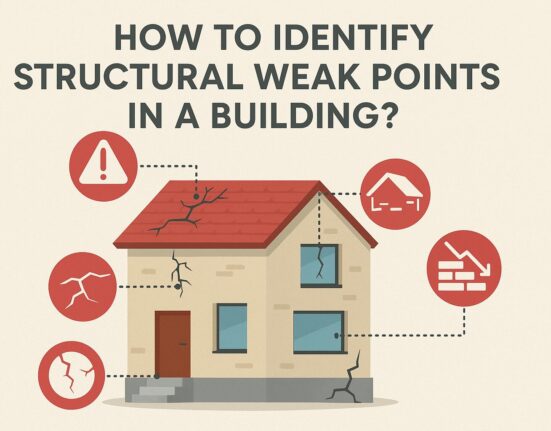Repairing the foundation of your home is a significant undertaking that requires careful planning, assessment, and execution to ensure long-lasting and reliable results. From identifying the underlying causes of foundation damage to selecting appropriate repair methods and hiring qualified professionals, there are several key steps involved in the process. By understanding the principles of reliable foundation restoration and taking proactive measures to address structural issues, homeowners can restore the stability and integrity of their homes effectively. This guide will explore how to reliably repair the foundation of your home, providing you with actionable insights to safeguard your investment and ensure the safety of your property.
1. Conduct a Comprehensive Assessment
Before initiating foundation repair, it’s essential to conduct a comprehensive assessment of your home’s foundation to identify the underlying causes of damage and determine the extent of the problem. Hire a qualified foundation specialist or structural engineer to inspect the foundation, evaluate soil conditions, and assess the structural integrity of the home. They will use specialized tools and techniques to identify areas of settlement, cracking, or shifting in the foundation and recommend appropriate repair solutions. Additionally, consider factors such as the age and construction of the home, local climate conditions, and previous repair history when assessing the foundation’s condition. A thorough assessment lays the foundation for effective repair strategies and ensures that all issues are addressed comprehensively.
2. Determine the Best Repair Methods
Once the assessment is complete, work with the foundation specialist to determine the most suitable repair methods for your home’s specific needs. Common foundation restoration techniques include underpinning, slab jacking, helical piers, and carbon fiber reinforcement, among others. Underpinning involves stabilizing and strengthening the foundation by installing additional support beneath existing footings or foundation walls. Slabjacking, or mud jacking, is a technique used to raise and level concrete slabs by injecting a grout mixture beneath the slab. Helical piers are steel piles driven into the ground to support and stabilize the foundation, while carbon fiber reinforcement can be used to strengthen and repair cracks in foundation walls. The choice of repair method will depend on factors such as the extent of damage, soil conditions, and budget considerations.

3. Hire Qualified Foundation Contractors
Selecting the right foundation restoration contractor is crucial for ensuring the reliability and effectiveness of the repair process. Look for contractors with experience, expertise, and a proven track record in foundation restoration. Verify their credentials, licenses, and certifications, and ask for references or testimonials from past clients. Additionally, request a detailed written estimate that outlines the scope of work, materials, labor costs, and project timeline. Be wary of contractors who offer significantly lower prices or promise quick fixes without conducting a thorough assessment of the damage. Investing in quality foundation maintenance performed by reputable professionals will provide peace of mind and long-term stability for your home.
4. Follow Proper Repair Procedures
Once the repair process begins, it’s essential to follow proper procedures to ensure the reliability and effectiveness of the repairs. Ensure that the contractor adheres to industry standards and best practices for foundation restoration, including proper excavation, installation of support systems, and backfilling procedures. Monitor the progress of the repairs closely and communicate regularly with the contractor to address any concerns or issues that arise. Additionally, consider implementing preventative measures such as proper drainage, moisture barriers, and soil stabilization techniques to mitigate future foundation problems. By following proper repair procedures and taking proactive steps to prevent future damage, you can ensure the long-term reliability of your home’s foundation.
5. Conduct Post-Repair Inspections
After the foundation restorations are completed, conduct post-repair inspections to verify the quality and effectiveness of the work. Hire an independent inspector or structural engineer to evaluate the repairs and ensure that they meet industry standards and specifications. Look for signs of settlement, cracking, or shifting in the foundation, as well as any operational issues with doors, windows, or flooring. Address any deficiencies or concerns promptly to prevent further damage and ensure the structural integrity of your home. Additionally, consider implementing a regular maintenance schedule to monitor the condition of the foundation and address any issues that arise promptly.
Conclusion
Reliably repairing the foundation of your home requires careful planning, assessment, and execution to ensure long-lasting and effective results. By conducting a comprehensive assessment, determining the best repair methods, hiring qualified contractors, following proper repair procedures, and conducting post-repair inspections, homeowners can restore the stability and integrity of their homes effectively. Investing in reliable foundation restorations will provide peace of mind and protect your investment for years to come. So, if you’re facing foundation issues in your home, don’t hesitate to take proactive steps to address them—reliable repairs are essential for ensuring the safety and longevity of your property.






